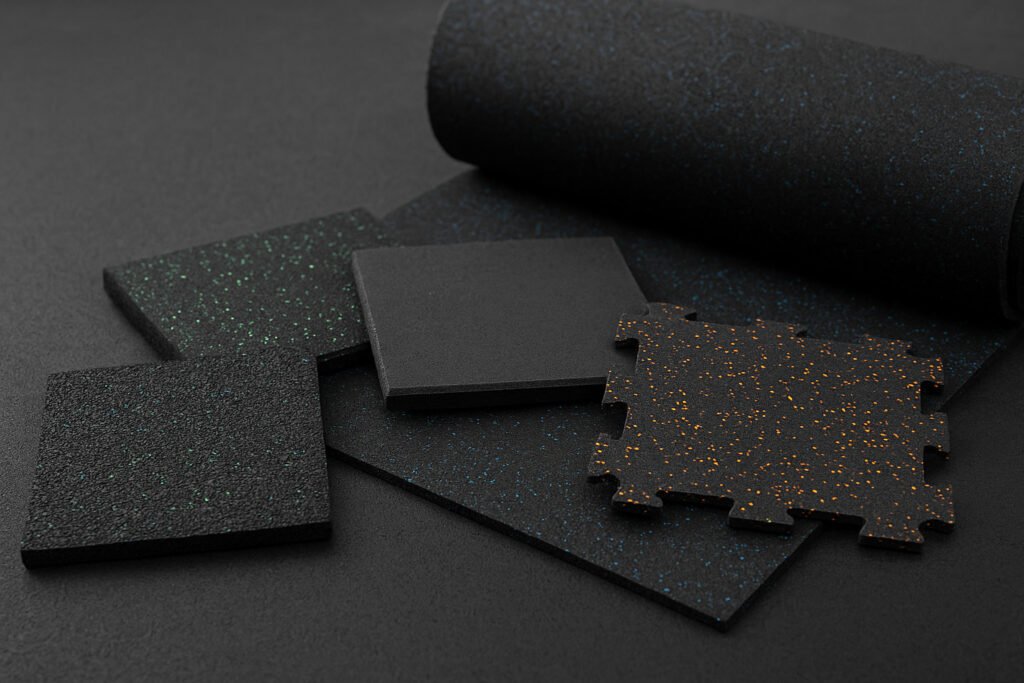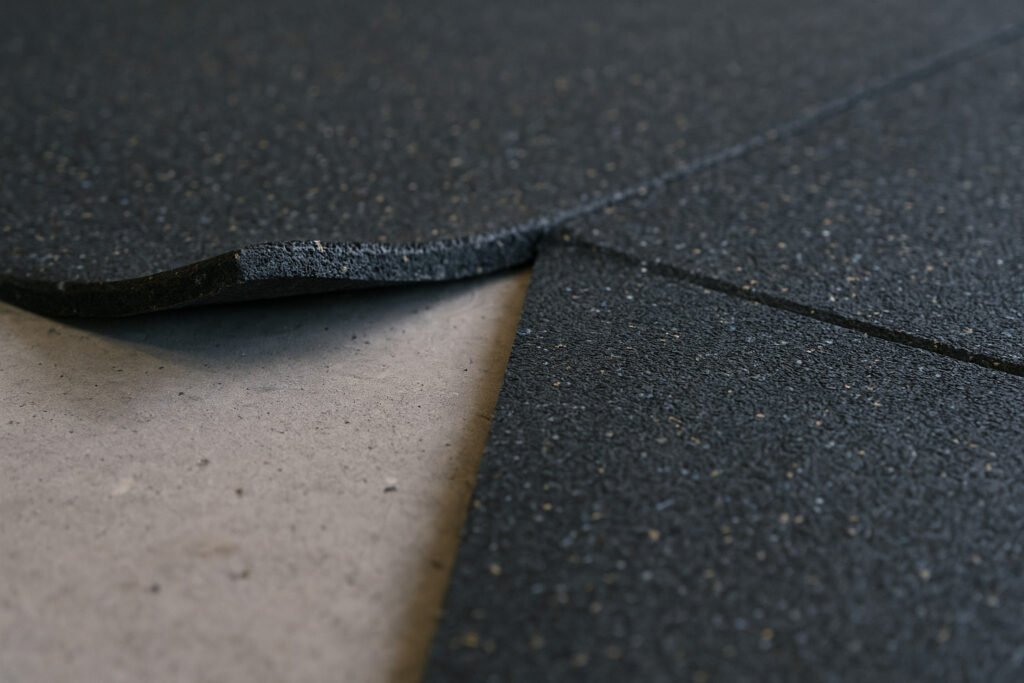What Are the Common Problems During Gym Rubber Flooring Installation and Maintenance?
Rubber flooring is popular in gyms, but installation mistakes or poor maintenance often lead to costly issues.
The most common problems with gym rubber flooring involve uneven subfloors, wrong adhesive, poor cleaning, and neglected thickness needs. Proper installation and regular care can solve these issues.

Installing gym flooring is not only about placing tiles or rolls. If you ignore details, you risk flooring damage, safety hazards, and higher replacement costs. Let’s break down common problems and practical solutions.
What Are the Installation Problems of Gym Rubber Flooring?
Rubber flooring installation looks simple, but small mistakes can ruin durability and safety.
The most common installation problems are uneven subfloors, wrong adhesive, cutting mistakes, no expansion gaps, and wrong thickness choice.

Uneven Subfloors
An uneven base causes bulging and gaps. Always clean and level the surface. Use self-leveling cement if needed.
Wrong Adhesive Choice
Tiles may lift or shift if glue or tape is not suitable.
- Heavy zones: full glue-down tiles.
- Functional zones: interlocking tiles without glue.
- Rolls: double-sided tape or glue.
Cutting and Joint Mistakes
Unclean cuts lead to poor alignment. Always use sharp cutters and straight rulers. Work from one wall outward.
No Expansion Gaps
Rubber expands with heat. Without a 2–5mm expansion gap, tiles buckle or leave gaps.
Wrong Thickness in Weight Zones
Thin flooring cracks under heavy weights. Use 20–50mm gym rubber tiles for weightlifting areas. See product details.
Table: Installation Mistakes and Solutions
| Problem | Impact | Solution |
|---|---|---|
| Uneven subfloor | Bulging, gaps | Level with self-leveling cement |
| Wrong adhesive | Lifting, shifting | Use proper glue/tape |
| Bad cutting/joints | Visible gaps | Professional tools, clean cuts |
| No expansion gap | Buckling, cracks | Leave 2–5mm at walls |
| Thin flooring in zones | Damage under weights | Choose 20–50mm tiles |
What Are the Maintenance Problems of Gym Rubber Flooring?
Daily use brings sweat, weights, and cleaning chemicals that affect floor life.
The most common maintenance problems are improper cleaning, slippery surfaces, wear and tear, seam issues, and odor.
Improper Cleaning
Harsh cleaners damage rubber. Use neutral cleaners and warm water.
Slippery Surfaces
Sweat or water causes slips. Keep ventilation strong and wipe spills quickly.
Heavy Wear or Fading
High-use areas wear faster. Use composite or EPDM-surface tiles for durability. Replace damaged tiles in parts.
Seam Cracks or Curling
Edges lift over time. Inspect regularly and re-glue or replace single tiles if needed.
Strong Odor
New floors or hot rooms release rubber smell. Use EN1177/CE certified eco tiles and ensure ventilation.
Table: Maintenance Problems and Solutions
| Problem | Impact | Solution |
|---|---|---|
| Harsh cleaning agents | Surface damage | Neutral cleaner, warm water |
| Slippery floors | Injury risk | Improve airflow, quick wipe |
| Wear & fading | Shortened lifespan | EPDM/composite tiles, partial swap |
| Seam curling | Safety hazard | Re-glue or replace single tile |
| Odor | User discomfort | Eco-certified tiles, ventilation |
FAQ
How often should gym rubber flooring be cleaned?
→ Daily dry sweep, weekly wet clean with neutral detergent.Can rubber flooring be installed without glue?
→ Yes, interlocking tiles or rolls with tape work for small or temporary gyms.How thick should flooring be in weightlifting areas?
→ At least 20–50mm to handle heavy barbell drops.Do rubber rolls need seams sealed?
→ Yes, sealing prevents dirt and bacteria buildup.What is the lifespan of gym rubber tiles?
→ 3–5 years in heavy-use zones, longer in cardio areas.How to remove strong rubber smell?
→ Ventilate well, mop with warm water and mild detergent.Can rubber tiles be replaced individually?
→ Yes, damaged tiles can be swapped without replacing the whole floor.Will rubber flooring damage concrete subfloors?
→ No, it protects concrete by absorbing impact.Can rubber flooring handle cleaning machines?
→ Yes, but use soft-brush or low-pressure machines.Is certification important?
→ Yes, EN1177 and CE ensure safety, shock absorption, and eco compliance.
Related Blogs
- How to Install Rubber Flooring on Concrete
- 10 Tips for Installing Rubber Flooring
- EPDM vs. SBR Rubber Flooring
- Why Do Gyms Use Rubber Flooring?
- The Complete Guide to Gym Rubber Flooring
Conclusion
Proper installation and careful maintenance extend gym flooring life, save costs, and ensure user safety.
